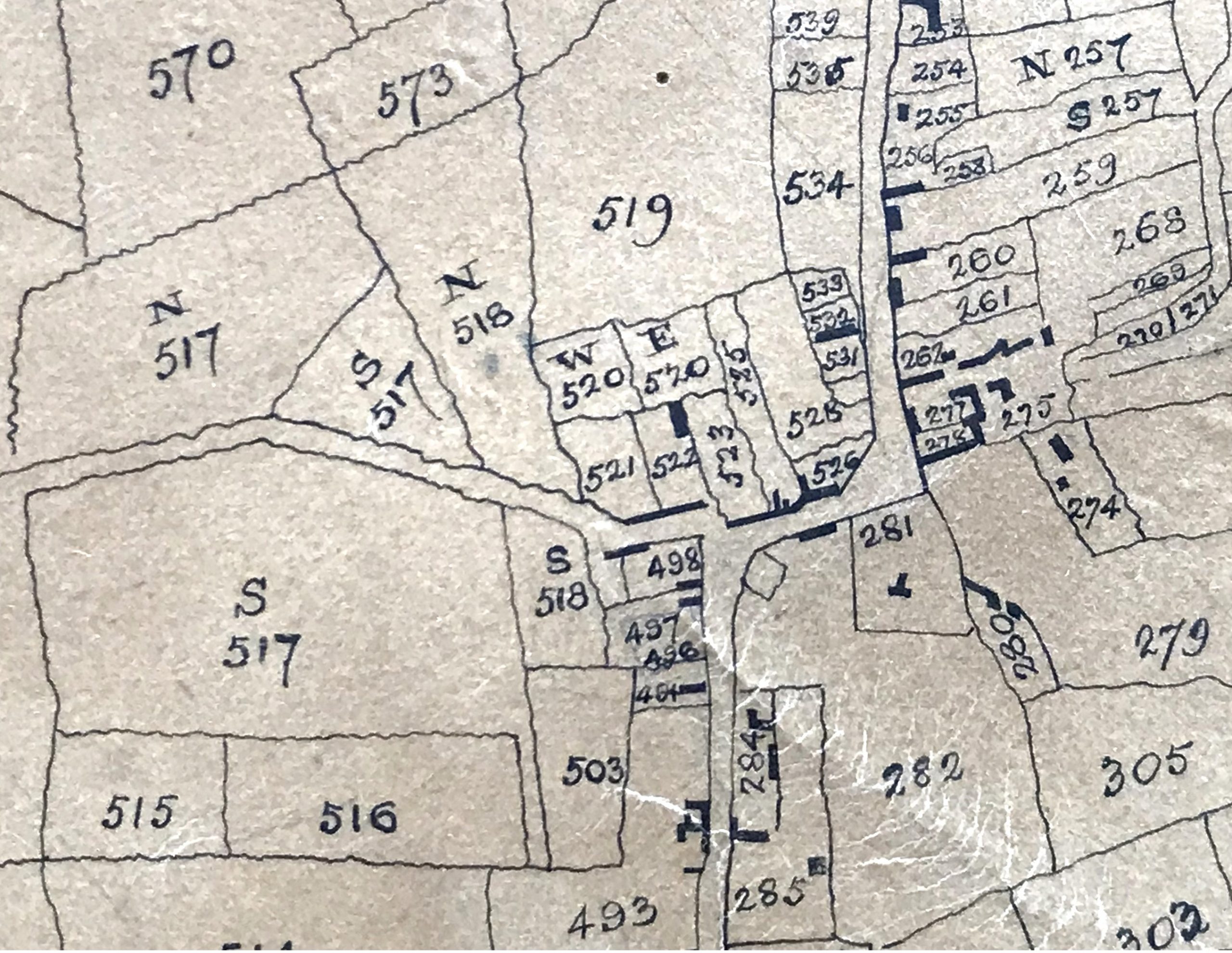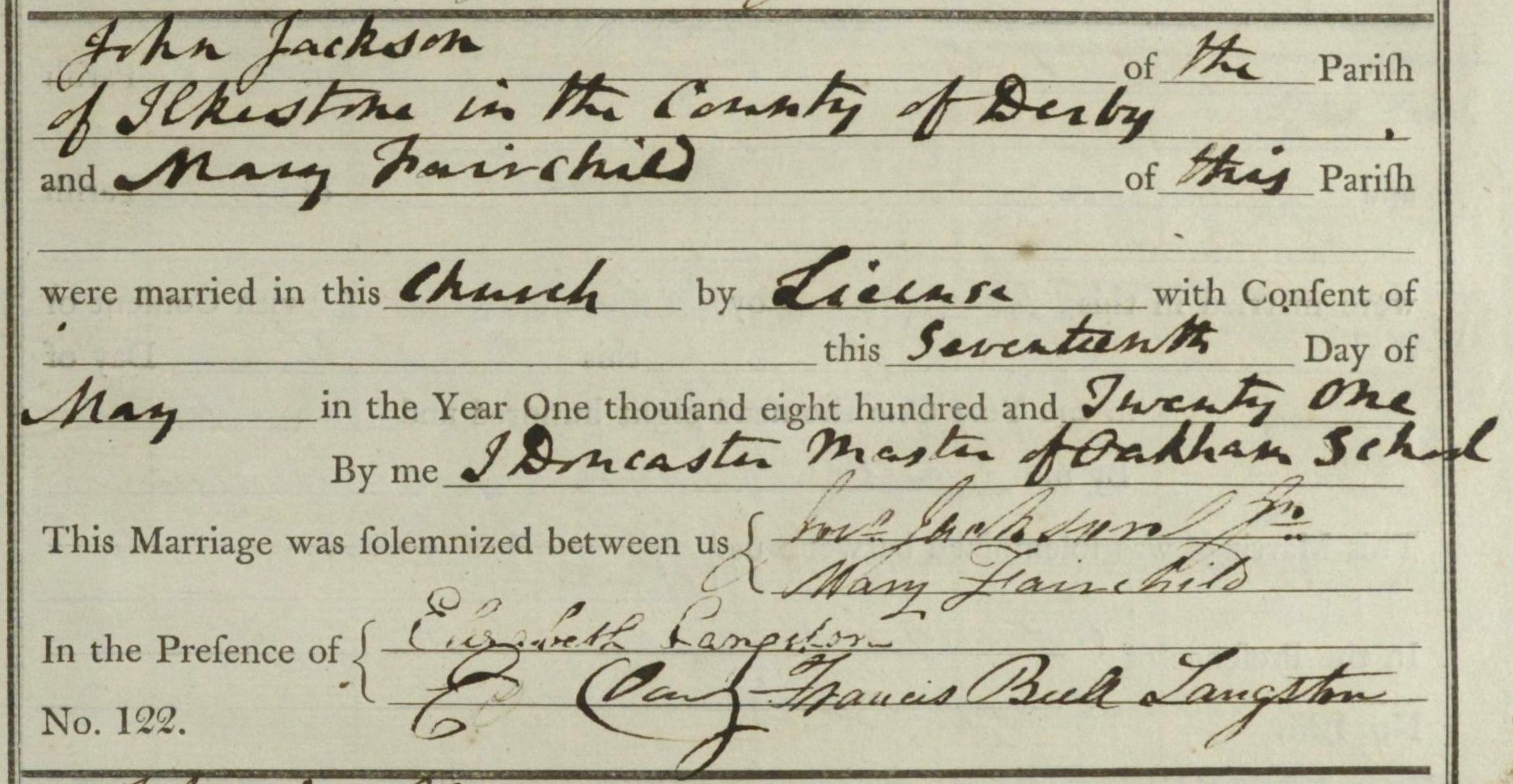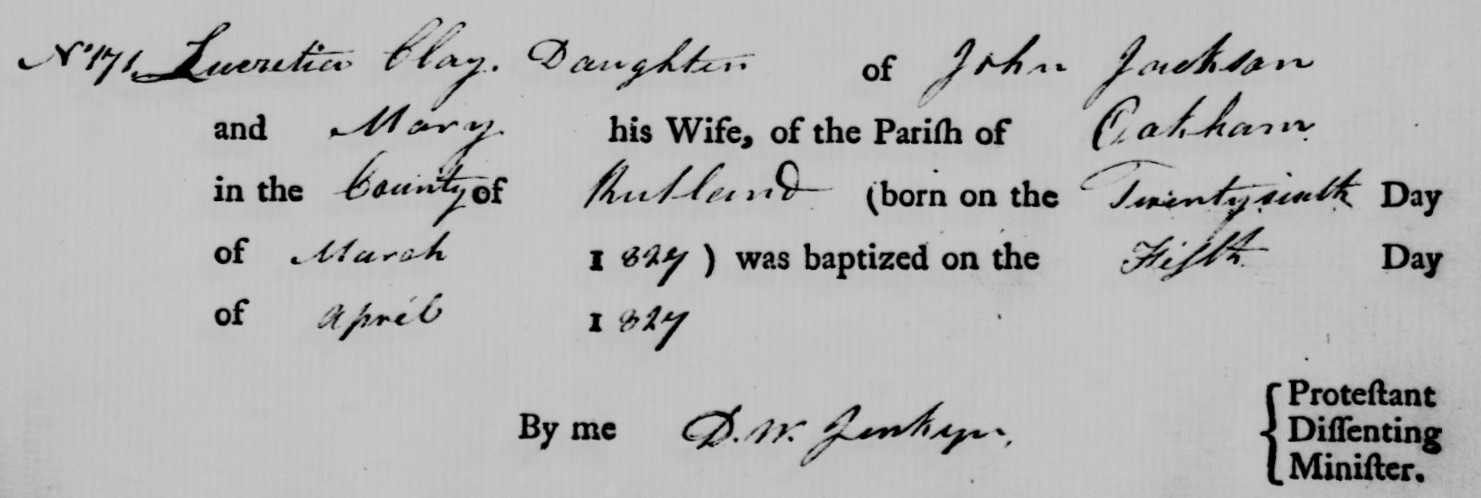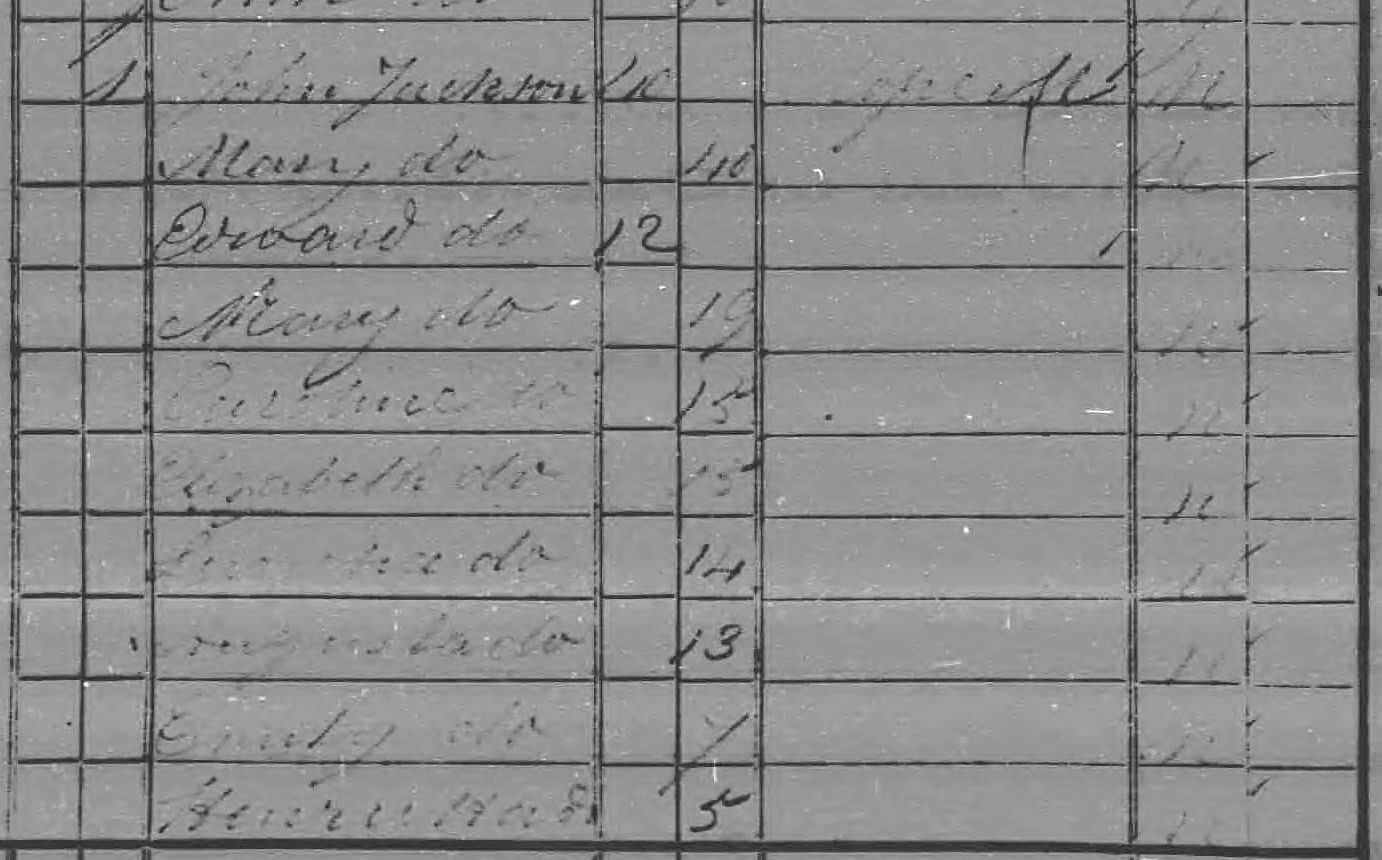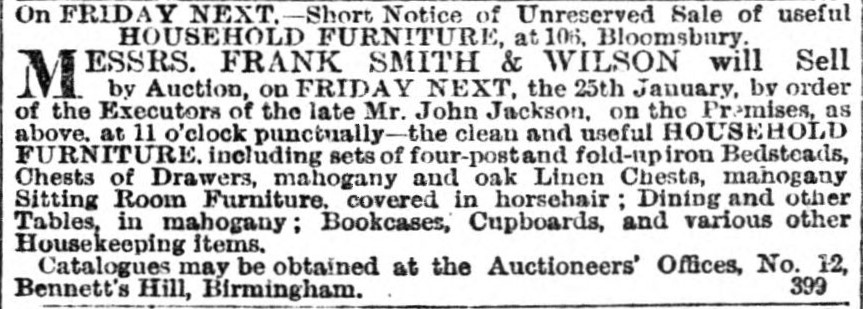Finally in our investigation of the Jackson family, we are taking a look at Thomas Jackson’s half brother, John Jackson junior.
—————————————————————————————————
Setting the scene
Before continuing, we should perhaps set the map below in context. It shows the Market Place area in 1798. The building in Plot 281 is St. Mary’s Church with its surrounding churchyard. Plot 497 is where the present Town Hall is situated, while parts of Plots 282, 284 and 285 are home to the present-day upper Market Place area. Radiating from this Market Place area are Town Street (later Bath Street) running to the north, Pimlico running to the west, and South Street running to the south.
Ilkeston Market Place area on William Gauntley’s Enclosure map of 1798
Following his trawl through the documents within Ilkeston’s Parish Chest, Edgar Waterhouse uncovered a teasure of information about the history of the town’s residents. Relevant to the Jackson saga, Edgar pointed out that in 1788 there was a row of five cottages at the corner of Pimlico as it enters the Market Place. One of them was occupied by Charles Jackson, his wife and their family of four children — John, Elizabeth, Ann and Sarah. This would be at Plot 498 on the map above. It should also be noted that nearby plot N518, owned by the Duke of Rutland in 1798 (the time of Ilkeston’s enclosure), was then described as “Ropewalk and Close“. Perhaps this was used by the Jacksons before they moved to the side of the Erewash Canal where John Jackson set up his new Ropewalk around 1806.
This Pimlico property in Plot 498 had changed hands on several occasions. For many years the premises had been owned by the Cocker family who also held farming land further down Pimlico and a barn, just around this Pimlico corner. In 1769 all five cottages belonged to Joseph Cocker but when he died in that year, they passed, by marriage, to William Hutchinson who sold three of them to George Hodgkinson of Annesley in 1780. In 1788, George sold them to Samuel Coates of Underwood who sold them to Isaac Attenborough in 1797. It would appear that, by this time, Isaac had managed to acquire all of the five cottages, as he pulled down two of them to build stables on their site while the other three were converted into an inn, the name of which is very familiar to Ilkestonians — the Sir John Warren.
—————————————————————————————————
John Jackson junior (1799-1878), his wife Mary (1798-1877) and children
John junior’s baptism record at Ilkeston Independent Chapel
John junior would probably have shared his childhood and adolescence with his half-siblings until they went their separate ways as young adults.
On May 16th, 1821 John junior completed a Marriage Bond which stated his residence as ‘of Ilkestone‘, his occupation as ‘rope maker‘, while his prospective bride was named as Mary Fairchild Clay of Oakham, although the name ‘Clay’ was crossed through. This alteration may have arisen because Mary had been baptised on February 7th, 1798 as Mary Clay Fairchild, illegitimate daughter of Ann Fairchild of Oakham, Rutland. However, since that event Mary’s mother had married Edward Clay (Mary’s presumptive father ?) on November 19th, 1804 at Thornhaugh Church, Rutland. So was Mary still Mary Fairchild or was she now Mary Clay — or was she some combination of both surnames ?!
On the following day — May 17th, 1821 — the marriage of Mary and John junior at Oakham Church was recorded (above). From the signatures, Mary regarded herself as a Fairchild while John clearly signed as ‘junior‘. His entry on the Marriage Bond was also clearly signed as “Jnr” (below) … what do you think ?
For a few years the couple lived at the Ropery in Ilkeston where their first three children were born — Mary Ann on February 20th, 1822; Caroline on February 7th, 1823; and Elizabeth Ann on September 11th, 1824. At all their baptisms, at Ilkeston Independent Chapel, their mother was recorded as ‘Mary Fairchild Clay‘
Then just before Christmas Day of 1825 John junior, like his father before him, was listed as ‘bankrupt’.
From the Leeds Intelligencer (December 29th, 1825)
And a few months after this the London Gazette (May 20th, 1826) announced that …
The Creditors who have proved their debts under a Commission of Bankrupt awarded and issued forth against John Jackson the Younger, of Ilkeston, in the County of Derby, Rope Maker, are requested to meet the Assignee of the estate and effects of the said Bankrupt, on Friday the 16th day of June next, at Twelve o’clock at Noon, at the Court of Commissioners of Bankrupts, in Bassinghall-Street in the City of London, in order to assent to or dissent from the payment by the Assignee, out of the said Bankrupt’s estate, of wages due from said Bankrupt’s estate, of wages due from the said Bankrupt to his servant; and also to assent to or dissent from the said Assignee compromising a claim made by him against a person, debtor to the said Bankrupt’s estate, and accepting a sum of money on account of and in full discharge of such claim; and on other special affairs.
It’s not clear whether or not this bankruptcy had an influence upon the Jackson family leaving Ilkeston a short time later, and going to live in Mary’s home town of Oakham, where her parents still resided. It was there that six subsequent children were baptised; the first of these was Lucretia Clay Jackson, born on March 29th, 1827 and baptised at Bar Gate Meeting House (an Independent Chapel) in Oakham on April 5th, 1827 (below).
The births and baptisms of their next four children were recorded in the same style at the same chapel. They were —
Augusta Jackson born on August 15th, 1828 and baptised on August 26th.
Edward Jackson born on December 26th, 1829 and baptised on January 26th, 1830.
John Thomas Jackson born on September 23rd, 1831 and baptised on October 25th, 1831.
Emily Julia Jackson born on January 26th, 1834 and baptised on February 2nd, 1834, though she had been born at Hallaton in Leicestershire, just a few miles south-west of Oakham.
Their next child, Henrietta Jackson, was born on May 6th, 1835 at Foleshill, Coventry, Warwickshire, and baptised there at the Independent Chapel, on July 24th.
Finally daughter Matilda Jackson was born in 1838, her birth registered at Foleshill, Warwickshire.
Fortunately for genealogists, the given names of the children are rather distinctive and therefore the family should be easy to locate on any subsequent census … you might have thought !!
—————————————————————————————————
The Census
Immediately below is part of the 1841 census, just three years after the birth of daughter Matilda. John junior is still a rope maker, and nine Jackson children are with the parents at Union Street in Worcester. Where is son John Thomas ?
We move on to the 1851 census, and the family has also moved on … northwards to Aston, Birmingham.
We notice that son John Thomas has reappeared, father John (junior) has changed his occupation and his name (slightly), and the majority of the family members have now decided they were born other than where their baptisms indicated. You may notice also that the ages of the parents don’t exactly match their baptism records.
Missing from this census record are daughters Mary Ann, Caroline, Elizabeth Ann and Augusta ?
Lucretia Clay Jackson is also missing, but she has married Alfred Hanson, a steel spectacle maker, at Kings Norton, Worcestershire, in 1850, and was living in Birmingham.
———————————–
[ It was in 1860 that Thomas Jackson wrote of his half-brother in disappointing fashion, though he obviously believes John junior is still alive and appears to know where he lives : “my brother John has taken upon himself to be offended at me too, & got his head full of all manner of ridiculous notions, how and for what cause I know not. But at all events, he has not written to me these two years, and I suppose would hardly be civil to me if I were to call on him at his own house. So if I have no friends or relatives in England who would welcome me there, what is the use of going”. ]
———————————–
By 1861 other children had left the Jackson household at Saint Vincent Street in Aston, Birmingham.
Once more John junior’s name was changed (– were the enumerators wrongly reading “John junior”? — ) though his occupation was not, while some ages and places of birth were questionable.
Edward and John Thomas have departed; Emily Julia seems to have married John Alsager Knowles, manager of a papier mâché works, in 1859 and continued to live in Birmingham until her death in 1899.
———————————–
[And John junior had not been forgotten by his trans-Atlantic half-brother, even after so many years apart …
My brother John has not written to me for over 7 years. He is an old man now. I should very much like to know how he is & where he is & if he be comfortable in his old age. None of my wifes relations ever write to me either. (January 18th, 1868)]
———————————–
Finally, by 1871, …. and then there was one (child that is)
Matilda had just married wire weaver John McGran (1870) and continued to live in Birmingham. This left Henrietta as the sole child living with the parents.
———————————–
[And in 1871, Thomas Jackson was still reflecting with distress upon his relationship with his half-brother: “My brother John has not written to me once in the last eleven years. I don’t know where he is, or what is become of him. He knows my direction. But it is clear he wishes to have nothing more to do with me. I never wronged or harmed him or his in any way, and with all my heart I wish him and all his family well and well to do it every way. We were only half brothers, I know. But the same sire was the Father of us both. And if his father did marry again and have a second family to encumber on the embarrass him, it was no fault of mine. He has been unfortunate I know. He has had a hard life of it. Perhaps he has a hard life of it now if he still lives. But I was not his guardian He was his own master long before I was 21 years old, and I left England when I was 22 and had nothing to do with him. But enough of that.]
———————————–
John Jackson junior died on January 15th, 1878, at a recorded age of 78, at 106 Bloomsbury Street in Aston. He was buried in Warstone Lane Cemetery.
His wife Mary had died in the previous year, at the same recorded age, and was buried in the same cemetery.
from the Birmingham Daily Post (January 22nd, 1878)
Their daughter Henrietta remained living in Birmingham, as a spinster, until her death in 1911, aged 78 (would you believe it ?!)
—————————————————————————————————
And now we continue our Grand Tour around the town, from the bottom of Station Road, to visit Grove Terrace off Rope Walk… with fever and disease, alterations and improvements.

